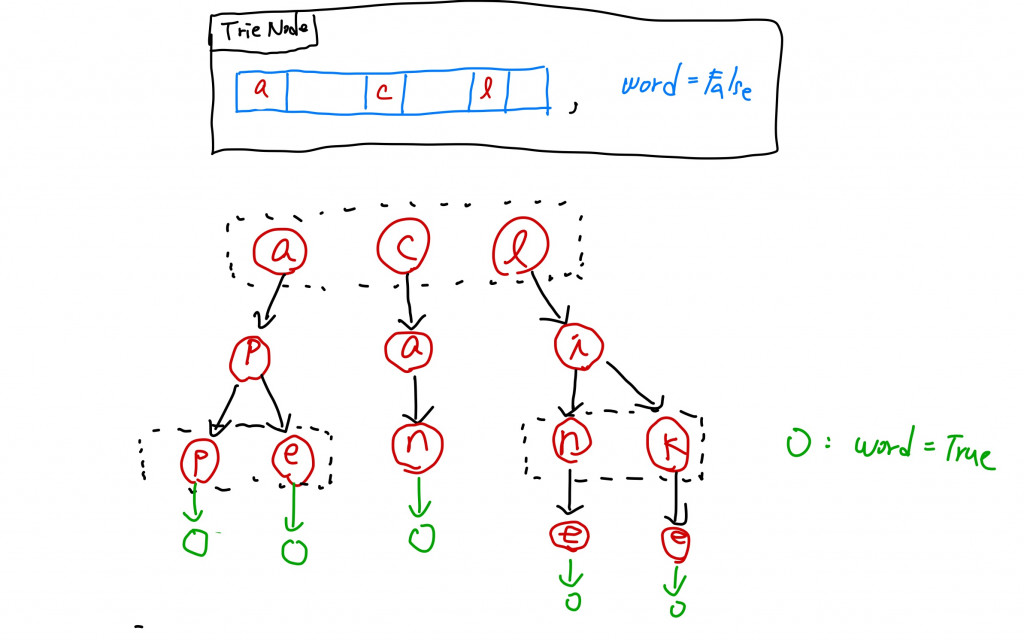大家好,今天要來分享的主題是Trie又稱為prefix tree,這個資料結構適合應用在快速搜索、儲存字串。另外在設計和字串相關的功能,例如:自動完成正在輸入的字串、或著拼字檢查...也很適合利用Trie去實作。
而Trie的實作主要使用到hashmap來完成,以下是Trie用來儲存字串的實作示意圖:
首先,Trie是由Trie node組成,每一個節點內有一個hash map和一個判斷儲存的字串是否結束的布林變數(如圖中最上面的長方形所示,之後則簡化了)。
hash map中存放的key會是input的字元,value則是指向另一個新的Trie node。如果在儲存時發現在hash map中已經有儲存相同的key了,就不需要再另外去創造新的Trie Node而是會共用(黑色虛線)。當我們所有需要儲存的字元都存完後會在下一個新的Trie node中將布林變數從初始的False改為True(綠色節點)。
class TrieNode:
def __init__(self):
self.children = {}
self.word = False
class Trie:
def __init__(self):
self.root = TrieNode()
def insert(self, word: str) -> None:
curr = self.root
for c in word:
if c not in curr.children:
curr.children[c] = TrieNode()
curr = curr.children[c]
curr.word = True
def search(self, word: str) -> bool:
curr = self.root
for c in word:
if c not in curr.children:
return False
curr = curr.children[c]
return curr.word
def startsWith(self, prefix: str) -> bool:
curr = self.root
for c in prefix:
if c not in curr.children:
return False
curr = curr.children[c]
return True
# Your Trie object will be instantiated and called as such:
# obj = Trie()
# obj.insert(word)
# param_2 = obj.search(word)
# param_3 = obj.startsWith(prefix)
上面的startWith,可以將input的字串當成可能已經儲存在Trie中的某些字串的prefix,例如:Trie裡存了"apple", "apply",則"app"為這兩個單字的preifx,startWith可以去判斷input string是否是某些字串的prefix,因此Trie才又被稱為prefix tree。
這種特性可以實現,平時在瀏覽器上輸入某些字串時,會自動提示一些當紅的搜尋關鍵字。
